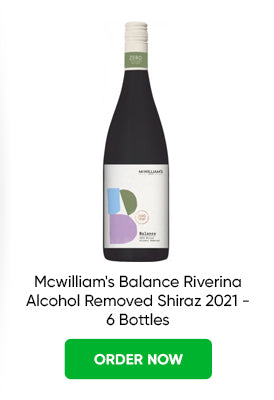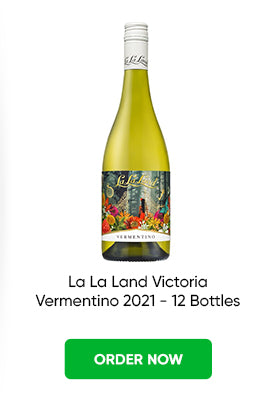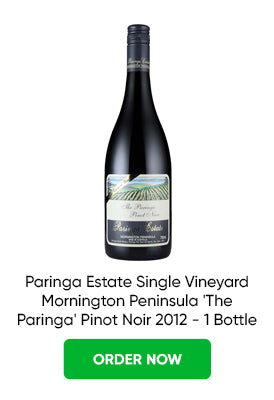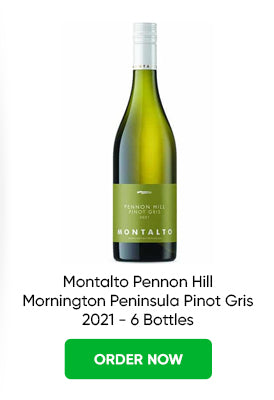The history of Australian winemaking is quite rich and remarkable, tracing back to 1788 with Governor Arthur Phillip's introduction of the first vines to Sydney. Yet, it was James Busby, often hailed as the father of the Australian wine industry– who truly laid the cornerstone by bringing cuttings from Europe and introducing Shiraz to the region.
Initially, the focus was on sweet, fortified wines, but the turning point came in the 1960s which drove the industry full throttle into the broad categories of today's known wine varieties and styles. With over 60 wine regions, each influenced by its unique climates, the result is a rich mosaic of tastes and traditions as varied and diverse as the landscape of Australia itself. No other geographical and climatic diversity offers such flexibility, which makes the industry adapt to climate change in several innovative ways, including changing grape varieties within regions or moving to cooler climates.
A notable highlight is Australia's possession of the oldest Shiraz vines globally, a lineage preserved through the centuries and a direct link to the industry's pioneering days. The fact that these ancient vines hadn't been infected by the phylloxera that plagued the European vineyards at the turn of the 19th century stands as a symbol of the lasting legacy that has brought Australia to its esteemed place within the international wine arena.
Old World vs New World Wines

The concept of "Old World" versus "New World" wines delineates a fundamental divide in the wine industry. "Old World" wines, like those coming from European giants like France, Italy, and Spain, are noted for their subtler alcohol content, lighter bodies, and earthy profile with mineral tones. Meanwhile, "New World" wines come from more recent wine-producing regions such as South Africa, the United States, Australia, and New Zealand. New World wines are full-bodied and alcoholic, but their brilliance lies in vibrant fruitiness. This distinction, though broad, provides a simple framework that allows an understanding of the diverse palette of global wines, underscoring the rich heritage and innovative spirit defining wine production across the world.
Australia’s Geography, Soils & Climate
 Australia's geography, soils, and climate are the factors that affect its diverse and vibrant wine regions. Each of them contributes to its unique characteristics that influence the wide array of wines produced across the continent.
Geography:
Australia's geography, soils, and climate are the factors that affect its diverse and vibrant wine regions. Each of them contributes to its unique characteristics that influence the wide array of wines produced across the continent.
Geography:
- Wine production is concentrated in the cooler southeast and southwest regions.
- The geographical features range over 60 wine regions, allowing the cultivation of various grape varieties.
Climate:
- Ranges from alpine conditions in Tasmania and southeastern Australia to Mediterranean climates in the southern and southwestern regions.
- The diversity in climate supports the production of both cool and warm climate wines, from crisp, aromatic whites to full-bodied, rich reds.
- The world’s purest air over southern Australia enhances the quality of grape cultivation, free from industrial pollution.
Soils:
- One of the most ancient landscapes, offering a wide array of soil types including nutrient-rich volcanic, young sand, and limestone.
-
Key soil types include:
Sand: Often lacks nutrients but is easy to work with.
Clay: Retains coolness, providing moisture during dry periods.
Silt: Richer in nutrients compared to sandy soils.
Loam: Ideal for vine growth, being fertile and well-drained.
- The variability within and between regions allows winemakers to plant grape varieties in their optimal terroir, contributing to the distinctive flavours of Australian wines.
It is Australia’s interlacing geography, climate and soil types that account for the uniqueness of its wine offerings across the country, thereby showcasing its ability to produce a wide range of wine styles.
Australia's Grape Growing Seasons
 Australia's grape growing seasons reflect its Southern Hemisphere location, with a cycle opposite to that of the Northern Hemisphere. Yet, the seasonal activities in the vineyard are universally consistent.
Pruning: This takes place during cooler months when vines are pruned to leave just a few buds which become dormant waiting for spring growth spurt.
Australia's grape growing seasons reflect its Southern Hemisphere location, with a cycle opposite to that of the Northern Hemisphere. Yet, the seasonal activities in the vineyard are universally consistent.
Pruning: This takes place during cooler months when vines are pruned to leave just a few buds which become dormant waiting for spring growth spurt.
- Spring (September – November):
Bud Burst and Growth: This stage is very important at the beginning of the growth period whereby buds burst thus leading to development of new shoots, leaves and eventually flowers that sets stage for grape production in the year.
- Summer (December – February):
Berry Set and Veraison: As temperatures rise, grape berries begin to form and then enter the veraison phase when their growth becomes faster and ripening starts making them change colour as well as accumulate sugar in them.
Harvest: The culmination of a year's work, harvest time varies significantly across regions and varieties based on climate, degree of grape maturity and winemaking objectives. Recent trends show shifts in harvest times, potentially due to climate change, with regions such as Hunter Valley having an early harvest.
These seasons frame the annual rhythm of Australia's vineyards, influencing not only the lifecycle of the vines but also the characteristics of the wine produced, showcasing the adaptability and resilience of Australian viticulture.
Australian Wine Regions By State
 The essence of Australian winemaking is anchored on its regionality, where each region’s distinctiveness has a lot to do with the kind of wine produced. The geographical indications used in wine labels are similar to the European naming system which certifies that they are genuine. It is important for consumers who want premium wines because some areas have become known for particular varieties such as Coonawarra with Cabernet Sauvignon and Barossa Valley with Shiraz!
New South Wales (NSW)
1. The Hunter Valley: Australia's first commercial wine region, renowned for its historical vine stock, some of the oldest globally.
The essence of Australian winemaking is anchored on its regionality, where each region’s distinctiveness has a lot to do with the kind of wine produced. The geographical indications used in wine labels are similar to the European naming system which certifies that they are genuine. It is important for consumers who want premium wines because some areas have become known for particular varieties such as Coonawarra with Cabernet Sauvignon and Barossa Valley with Shiraz!
New South Wales (NSW)
1. The Hunter Valley: Australia's first commercial wine region, renowned for its historical vine stock, some of the oldest globally.
-
Climate: Subtropical with maritime influences, leading to warm, humid days and cool nights.
-
Soils: Varies from sandy alluvial flats in the lower Hunter to black, silty loam soils in the upper Hunter.
Key Varieties: Famous for unique Semillon, alongside Chardonnay, Shiraz, and a growing list of warm-climate alternatives.
Shop Hunter Valley’s Hero Wines


 2. Orange: Recognised for its high-altitude vineyards and premium wines.
2. Orange: Recognised for its high-altitude vineyards and premium wines.
-
Climate: Continental, with warm summer days, cool nights, and dry autumn conditions ideal for grape growing.
-
Soils: Rich, volcanic soils ranging from clays to loams.
Key Varieties: Notable for Chardonnay, Sauvignon Blanc, Shiraz, and Cabernet Sauvignon.
Shop Orange’s Hero Wines


 3. The Riverina: Known as the 'engine room' of the NSW wine industry, mainly producing bulk or table wines.
3. The Riverina: Known as the 'engine room' of the NSW wine industry, mainly producing bulk or table wines.
-
Climate: High temperatures and late-season humidity conducive to Botrytis cinerea ("Noble Rot").
-
Soils: Red-brown earth with a loamy surface and limestone rubble.
Key Varieties: Chardonnay, Semillon, Shiraz, and Cabernet Sauvignon.
Shop Riverina’s Hero Wines


 Victoria (Vic)
1. The Mornington Peninsula: A small, picturesque region producing some of the country's best cool-climate wines.
Victoria (Vic)
1. The Mornington Peninsula: A small, picturesque region producing some of the country's best cool-climate wines.
-
Climate: Maritime, influenced by surrounding bodies of water, affecting each vineyard site differently.
-
Soils: Diverse, ranging from yellow and brown soils over clay to volcanic red clay and sandy soils.
Key Varieties: Excellent Pinot Noir, Chardonnay, and Pinot Gris/Grigio.
Shop Mornington Peninsula’s Hero Wines


 2. Rutherglen: Famed for its fortified wines and historic wine-producing heritage.
2. Rutherglen: Famed for its fortified wines and historic wine-producing heritage.
-
Climate: Continental, with hot summers and cool winters, moderated by airflow from the Victorian Alps.
-
Soils: Varied, including red loam over clay to sandier soils near the Murray River.
Key Varieties: Renowned for fortified Muscat and Muscadelle, as well as Shiraz and Durif.
Shop Rutherglen’s Hero Wines


 3. Yarra Valley: A leading cool-climate region with a diverse landscape and wine portfolio.
3. Yarra Valley: A leading cool-climate region with a diverse landscape and wine portfolio.
-
Climate: Continental with Mediterranean influences, varied mesoclimates due to altitude.
-
Soils: Grey-brown to fertile red volcanic soils.
Key Varieties: Chardonnay, Pinot Noir, Cabernet Sauvignon, and Shiraz excel here.
Shop Yarra Valley’s Hero Wines


 Tasmania (Tas)
1. Tasmania: Recognized for its exceptional cool-climate wines on a stunning island setting.
Tasmania (Tas)
1. Tasmania: Recognized for its exceptional cool-climate wines on a stunning island setting.
-
Climate: Cool, moderate maritime, influenced by the Southern Ocean.
-
Soils: A mix of ancient sandstones, volcanic soils, alluvial, and gravelly basalt.
Key Varieties: Produces elegant Riesling, Chardonnay, Pinot Noir, and notable sparkling wines.
Shop Tasmania’s Hero Wines


 South Australia (SA)
1. Adelaide Hills: Offers a diverse landscape and equally varied wine portfolio.
South Australia (SA)
1. Adelaide Hills: Offers a diverse landscape and equally varied wine portfolio.
-
Climate: Moderate with cool-climate pockets at higher elevations.
-
Soils: Mixture of grey-brown loamy sands and sandy soils over clay subsoils.
Key Varieties: Sauvignon Blanc, Chardonnay, Pinot Noir, Shiraz, plus emerging alternative varieties.
Shop Adelaide Hills’ Hero Wines


 2. Barossa Valley: An iconic wine-producing area with a rich history and old vines.
2. Barossa Valley: An iconic wine-producing area with a rich history and old vines.
-
Climate: Warm Mediterranean, with ample sunshine.
-
Soils: Mostly low-fertility clay loam to sandy soils.
Key Varieties: Known for full-bodied Shiraz, Cabernet Sauvignon, and Grenache.
Shop Barossa Valley’s Hero Wines


 3. Clare Valley: Famous for stunning landscapes and top-quality wines.
3. Clare Valley: Famous for stunning landscapes and top-quality wines.
-
Climate: Warm, moderately continental, with cooler temperatures at higher altitudes.
-
Soils: Diverse, from terra rossa to broken slate.
Key Varieties: Best known for Riesling, alongside Shiraz and Cabernet Sauvignon.
Shop Clare Valley’s Hero Wines


 4. Coonawarra: Esteemed for its terra rossa soil, producing in-demand red wines.
4. Coonawarra: Esteemed for its terra rossa soil, producing in-demand red wines.
-
Climate: Moderate ocean-influenced, with cool summers.
-
Soils: Famous terra rossa atop limestone.
Key Varieties: Primarily Cabernet Sauvignon, with quality Shiraz and Merlot.
Shop Coonawarra’s Hero Wines


 5. McLaren Vale: A pioneer in South Australian wine, known for sustainable practices.
5. McLaren Vale: A pioneer in South Australian wine, known for sustainable practices.
-
Climate: Mediterranean, moderated by nearby geographical features.
-
Soils: Geologically diverse, mostly free-draining.
Key Varieties: Dominated by Shiraz, Cabernet Sauvignon, and Grenache, with a rise in alternative varieties.
Shop McLaren Vale’s Hero Wines


 Western Australia (WA)
1. Margaret River: A premium wine region with a relatively young but established reputation.
Western Australia (WA)
1. Margaret River: A premium wine region with a relatively young but established reputation.
-
Climate: Mediterranean with significant maritime influences.
-
Soils: Deep, well-drained, red gravelly loams over granite.
Key Varieties: Semillon Sauvignon Blanc blends, Chardonnay, and Cabernet Sauvignon.
Shop Margaret River’s Hero Wines


 2. Geographe: An exciting, emerging region named after early French explorations.
2. Geographe: An exciting, emerging region named after early French explorations.
-
Climate: Modified warm temperatures by southwest sea breezes.
-
Soils: Limestone-based, free-draining with low natural fertility.
Key Varieties: Produces both reds and whites, notably Semillon, Sauvignon Blanc, Shiraz, and Cabernet Sauvignon.
Shop Geographe Hero Wines
Australia’s rich tapestry of wines has been significantly contributed to by each of these regions which have distinct climates, soils and viticultural practices in Australia thereby showcasing the country’s ability to produce a vast array of wine styles and flavours.
Find Your Favourite with Just Wines
We at Just Wines bring you an extensive range from Australia's leading wine producing areas. Our offerings encompass all aspects of Australian winemaking- from the revered Coonawarra Cabernet Sauvignon to Barossa Valley’s celebrated Shiraz. Experience the distinct tastes of each region with us, whether you're seeking the crisp whites of Tasmania or the full-bodied reds of McLaren Vale. At Just Wines, we have got everything covered when it comes to experiencing Australia’s wine treasures! Cheers.
 Australia's geography, soils, and climate are the factors that affect its diverse and vibrant wine regions. Each of them contributes to its unique characteristics that influence the wide array of wines produced across the continent.
Geography:
Australia's geography, soils, and climate are the factors that affect its diverse and vibrant wine regions. Each of them contributes to its unique characteristics that influence the wide array of wines produced across the continent.
Geography:
 Australia's grape growing seasons reflect its Southern Hemisphere location, with a cycle opposite to that of the Northern Hemisphere. Yet, the seasonal activities in the vineyard are universally consistent.
Australia's grape growing seasons reflect its Southern Hemisphere location, with a cycle opposite to that of the Northern Hemisphere. Yet, the seasonal activities in the vineyard are universally consistent.
 The essence of Australian winemaking is anchored on its regionality, where each region’s distinctiveness has a lot to do with the kind of wine produced. The geographical indications used in wine labels are similar to the European naming system which certifies that they are genuine. It is important for consumers who want premium wines because some areas have become known for particular varieties such as Coonawarra with Cabernet Sauvignon and Barossa Valley with Shiraz!
New South Wales (NSW)
1. The Hunter Valley: Australia's first commercial wine region, renowned for its historical vine stock, some of the oldest globally.
The essence of Australian winemaking is anchored on its regionality, where each region’s distinctiveness has a lot to do with the kind of wine produced. The geographical indications used in wine labels are similar to the European naming system which certifies that they are genuine. It is important for consumers who want premium wines because some areas have become known for particular varieties such as Coonawarra with Cabernet Sauvignon and Barossa Valley with Shiraz!
New South Wales (NSW)
1. The Hunter Valley: Australia's first commercial wine region, renowned for its historical vine stock, some of the oldest globally.


 2. Orange: Recognised for its high-altitude vineyards and premium wines.
2. Orange: Recognised for its high-altitude vineyards and premium wines.


 3. The Riverina: Known as the 'engine room' of the NSW wine industry, mainly producing bulk or table wines.
3. The Riverina: Known as the 'engine room' of the NSW wine industry, mainly producing bulk or table wines.


 Victoria (Vic)
1. The Mornington Peninsula: A small, picturesque region producing some of the country's best cool-climate wines.
Victoria (Vic)
1. The Mornington Peninsula: A small, picturesque region producing some of the country's best cool-climate wines.


 2. Rutherglen: Famed for its fortified wines and historic wine-producing heritage.
2. Rutherglen: Famed for its fortified wines and historic wine-producing heritage.


 3. Yarra Valley: A leading cool-climate region with a diverse landscape and wine portfolio.
3. Yarra Valley: A leading cool-climate region with a diverse landscape and wine portfolio.


 Tasmania (Tas)
1. Tasmania: Recognized for its exceptional cool-climate wines on a stunning island setting.
Tasmania (Tas)
1. Tasmania: Recognized for its exceptional cool-climate wines on a stunning island setting.


 South Australia (SA)
1. Adelaide Hills: Offers a diverse landscape and equally varied wine portfolio.
South Australia (SA)
1. Adelaide Hills: Offers a diverse landscape and equally varied wine portfolio.


 2. Barossa Valley: An iconic wine-producing area with a rich history and old vines.
2. Barossa Valley: An iconic wine-producing area with a rich history and old vines.


 3. Clare Valley: Famous for stunning landscapes and top-quality wines.
3. Clare Valley: Famous for stunning landscapes and top-quality wines.


 4. Coonawarra: Esteemed for its terra rossa soil, producing in-demand red wines.
4. Coonawarra: Esteemed for its terra rossa soil, producing in-demand red wines.


 5. McLaren Vale: A pioneer in South Australian wine, known for sustainable practices.
5. McLaren Vale: A pioneer in South Australian wine, known for sustainable practices.


 Western Australia (WA)
1. Margaret River: A premium wine region with a relatively young but established reputation.
Western Australia (WA)
1. Margaret River: A premium wine region with a relatively young but established reputation.


 2. Geographe: An exciting, emerging region named after early French explorations.
2. Geographe: An exciting, emerging region named after early French explorations.
 FREE Shipping On Orders Over $250 | Get $20 off on your first order
FREE Shipping On Orders Over $250 | Get $20 off on your first order












